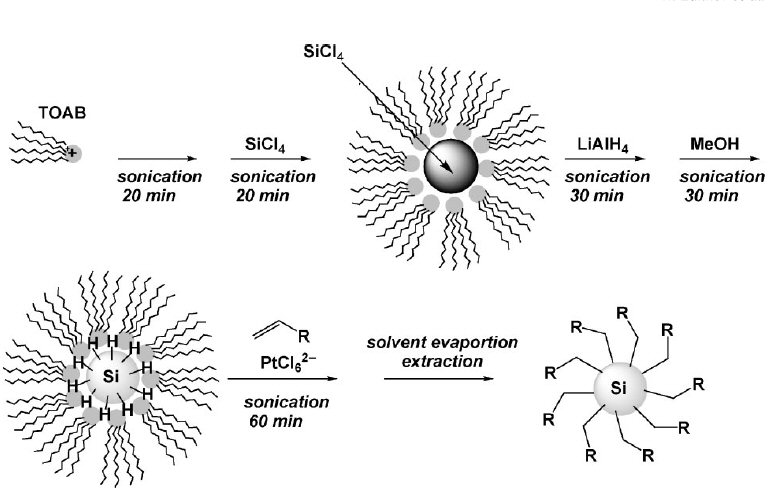Nano Particles
Silicon nanoparticles (Si NPs) are a very interesting field of research because of their applications in biological fluorescence imaging and in optoelectronic devices. Due to quantum confinement effects, silicon nanoparticles have special optical and electronic properties and, in particular, they show a bright luminescence that is strongly dependent on their size.

Fig. 1 General reaction scheme
Recently Si NPs get more and more attention because of their several advantages like non-toxicity, highly stability against photobleaching and easiness to be further functionalized with biomolecules (like antibodies) to be used as luminescent labels.
Obtaining Si NPs with a size smaller than 5 nm is still challenging because they are very prone to oxidation that can be avoided only with a complete capping of the surface.
In particular we are focused on the preparation (by wet chemistry) and characterization of amine- and carboxy-terminated silicon nanoparticles with different sizes and, in particular, with a size between 1.5-3 nm. The methods that we used are both reduction and oxidation methods in solution.

Fig. 2 TEM image, corresponding particle size distribution histogram (particle size distribution of 1.57 ± 0.24 nm)
Reference:
1. M. Rosso-Vasic, E. Spruijt, B. van Lagen, L. De Cola, H. Zuilhof, Small, 2008, 4, 1835-1841
2. M. Rosso-Vasic, E. Spruijt, Z. Popovic, K. Overgaag, B. van Lagen, B. Grandidier, D. Vanmaekelbergh, D. Domínguez-Gutiérrez, L. De Cola, H. Zuilhof, J. Mater. Chem., 2009, 19, 5926–5933.
